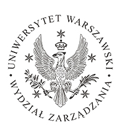ORCID
Oscar Barriga Cabanillas 0009-0008-0459-1043
Abstract
The 2001–02 Argentine crisis had a profound impact on Uruguay’s economy. Uruguay’s gross domestic product shrank by 17.5 percent, and the proportion of people living below the poverty line doubled in only two years. It took almost 10 years for the poverty rate to recover to its precrisis level. This paper uses a macro-micro simulation technique to simulate the impact of a similar crisis on the current Uruguayan economy. The simulation exercise suggests that Uruguay would now be in a better place to weather such a severe crisis. The impact on poverty would be considerably more moderate; inequality would not change significantly; and household incomes would be 8 percent lower than in the absence of a crisis (almost 9 percent lower among households in the bottom 40 percent of the income distribution). The paper also explores the changes in social welfare policy that took place in the last decade that are protecting vulnerable groups from new macroeconomic shocks. We find that, despite the new policies, young individuals, woman-headed households, residents of Montevideo, and people who have not completed secondary education are more vulnerable to falling into poverty were the crisis to strike.
Recommended Citation
Barriga Cabanillas, Oscar; Lugo, Maria Ana; Rodríguez-Castelan, Carlos; Nielsen, Hannah; and Zanetti, María Pía
(2024)
"Is Uruguay More Resilient This Time? Distributional Impacts of a Crisis Similar to the 2001–02 Argentine Crisis,"
Journal of Banking and Financial Economics: Vol. 2015:
No.
4, Article 5.
DOI: 10.7172/2353-6845.jbfe.2015.2.5
Available at:
https://press.wz.uw.edu.pl/jbfe/vol2015/iss4/5
First Page
64
Last Page
90
Page Count
27
Received Date
University of Warsaw
Revised Date
29 January 2015
Accept Date
5 August 2015
Online Available Date
17 August 2015
DOI
10.7172/2353-6845.jbfe.2015.2.5
JEL Code
E32; E37; F6; I3; O54
Publisher
17 August 2015


